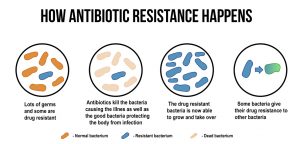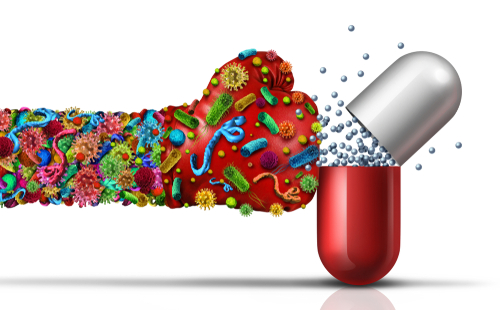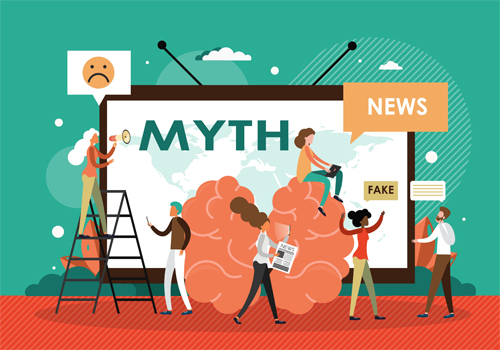WORDS PROFESSOR DR SASHEELA SRI LA SRI PONNAMPALAVANAR
 FEATURED EXPERT FEATURED EXPERTPROFESSOR DR SASHEELA SRI LA SRI PONNAMPALAVANAR Infectious Disease Professor University Malaya Medical Centre (UMMC) |
As Malaysia and most of the world transitioned to the endemic phase of COVID-19, it’s easy to forget that just two years ago, the pandemic had led to millions of lives lost, rise in unemployment rates, and the near-collapse of healthcare systems due to the tsunami of cases. Today, thanks to the quick development of medical innovations such as COVID-19 vaccines, we are now able to continue living our lives in the new normal, resuming productivity, and building towards economic recovery and growth.
Now that we have seen the long-lasting and devastating impact that a pandemic can leave, it is vital that we draw our attention to tackling another urgent public health crisis—antimicrobial resistance, which continues to rise to alarming levels across the world.
A SILENT PANDEMIC
Over the years, antimicrobial resistance has become an urgent health challenge on a global scale. This is because microbes such as bacteria, fungi, and viruses no longer respond to commonly used medicines, resulting in infections becoming harder to treat.

Antimicrobial treatment no longer serves their desired effect, which in turn will increase the risk of poor outcomes in patients with an infection caused by antimicrobial resistance.
During the COVID-19 pandemic, there was a significant increase in antibiotic prescriptions despite a relatively low bacterial co-infection rate.
The misuse of antibiotics in these patients can result in increased selective pressure for antimicrobial resistance leading to a lasting consequence of the COVID-19 pandemic .
Apart from overprescribing of antibiotics unnecessarily, the increased risk of antimicrobial resistance is compounded by the lack of awareness of appropriate antibiotic use and a poor understanding on the consequences of misusing antibiotics among the public .
It is estimated that drug resistance claims 700,000 lives every year, and this toll is projected to increase exponentially to 10 million a year by 2050 without immediate action.
CONCERNING IMPACTS OF ANTIMICROBIAL RESISTANCE
Development of new antibiotics may not be fast enough to replace those that have become less effective due to antimicrobial resistance
The discovery of antibiotics was a turning point in human history, revolutionizing medicine and increasing the survival rates of infected patients over time.
However, the growing burden of antimicrobial resistance threatens the return to a world with a scarcity of effective treatments for even common bacterial infections such as urinary tract infection, pneumonia, skin infection, and surgical site infections.
As the effects of antimicrobial resistance continue to increase today, the discovery and development of new antimicrobials is not able to keep up against the emergence of AMR.
There is an urgent need for new antibacterial drugs in the market, but with this, comes the importance of ensuring that these antibiotics are used wisely.
Patients should be prescribed antibiotics only when needed, at the right dose, frequency, and duration. Otherwise the new antibiotics will also suffer the same fate as its predecessors and eventually lose effectiveness .
Antimicrobial resistance can also result in productivity loss caused by sickness and premature death, as well as rise of healthcare cost that stems from prolonged hospital stays and care
Without effective tools for the prevention and adequate treatment of drug-resistant infections, treatment may fail for an increasing number of patients. There will also be an increased risk in major medical procedures such as surgery, chemotherapy, and organ transplants .
WHAT CAN WE DO TO REDUCE & PREVENT ANTIMICROBIAL RESISTANCE?
- We should only take antibiotics when prescribed by a doctor and correctly follow the prescription directions.
- Don’t demand for antibiotics and buy medication without a prescription, or share or take leftover antibiotics.
- Maintain strict infection prevention measures such as hand hygiene to reduce the spread of antimicrobial resistance organisms.
- There is now increasing evidence that certain vaccines currently available for infectious diseases can decrease the risks of AMR by preventing bacterial and viral infections. Keeping up to date on vaccination schedules. particularly for children and elderlies, may be able to reduce the use of antibiotics, and thus prevent antibiotic-resistant infections.
A CALL TO STAKEHOLDERS TO RISE UP & REDUCE THE SPREAD OF ANTIMICROBIAL RESISTANCE
Besides creating awareness among consumers and healthcare professionals, combatting antimicrobial resistance also requires action from governments, policymakers, and industry players to really address the crux of the issue.
Investment is required in antibiotic research and development, both as a tool to control novel disease outbreaks, and to treat known pathogens developing resistance to currently available treatments.
We must learn from the COVID-19 pandemic to address the next global and public health threat. We have seen that it is indeed possible for all parties to work together to reduce the spread of COVID-19—from citizens adhering to new SOPs, pharmaceutical companies driving innovations that led to the creation of vaccines and COVID-19 treatment, and governments who put in place and enforced guidelines for the people, while also supporting the R&D of these innovations.
The same urgency is needed so that we can prevent the next public health crisis.







